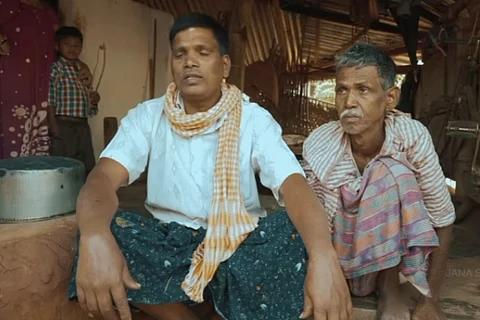

Telugu superstar and Jana Sena party chief Pawan Kalyan on Tuesday asked the ruling Telugu Desam Party (TDP) for a response within 48 hours on the high prevalence of kidney-related diseases in the Uddanam region of Srikakulam district in Andhra Pradesh.
After meeting the villagers, Pawan had tweeted that currently, lakhs were afflicted by this chronic kidney disease known as Uddanam Nephropathy. He rued that the issue could not be addressed effectively by successive governments and legislative members in the past two decades.
What is Uddanam Nephropathy?
The Uddanam region that lies in north-coastal Andhra consists of the mandals of Kaviti, Sompeta, Kanchili, Itchapuram, Palasa and Vajrapukotturu, accounting for more than 100 villages in total.
As of 2015, It was estimated that more than 4500 people had died in the last ten years, and around 34,000 people were suffering from kidney diseases in this area alone.
It was reported that each family in the area had at least one person suffering from a kidney ailment. The cases had first mysteriously surfaced in the early 90s.
Symptoms included hypertension and diabetes, followed by a long asymptomatic period, and later diagnosed with excess proteins in the urine, decreased red blood cell count and high levels of uric acid in the blood.
The phenomenon was discussed and termed Uddanam Nephropathy at the 2013 International Congress of Nephrology held in Hong Kong.
Why does it occur?
Though it has been close to twenty years since the first cases were reported, the cause of Uddanam Nephropathy is yet to be scientifically established. The disease is known to disproportionately affect farmers and agricultural workers. Coconut and cashew are the main crops grown in the area.
"Although the association of specific occupations with endemic nephropathy has highlighted the issue of environmental toxins and heat stress, the exact cause of Uddanam Nephropathy is still an enigma," writes Anirban Ganguli of Georgetown University in the May 2016 issue of the American Journal of Kidney Disease:
"While chemical analyses of cultivated rice or drinking water from the endemic region have been negative, the concern of environmental pollution with organo-chemical pesticides and heavy metal-remains, because this was not assessed in these studies,” he adds.
In 2011, a group of researchers studied the drinking water sources of these villages and found that "the presence of phenols and mercury in drinking water was found to be very high...Phenols and mercury, being very toxic in their characteristic nature, are bio-accumulative. Hence these waters are found not suitable for potable purposes."
But this finding too could not conclusively term water to be the sole culprit for such a high prevalence.
In 2016, The Indian Council of Medical Research (ICMR) along with researchers of Harvard University, Andhra Medical College, Bhabha Atomic Research Centre (BARC) and NTR University of Health Sciences among others looked into the matter.
Researchers initially pinpointed “excessive levels of silica in water” as the cause after a preliminary round of examination. The ICMR research however could not be pursued further due to a fund crunch.
What has been done?
According to the World Health Organization, this is one of the three regions in the world with the highest concentration of chronic kidney diseases (CKD) after Sri Lanka and Nicaragua.
In 2015, the state's Medical and Health Minister Kamineni Srinivasa Rao had officially acknowledged that 70% of the total kidney ailments in Andhra came from the Uddanam region. The state has set up several free dialysis units in the region since then, but to no avail.
Y Krishna Murthy -president of Paryavarana Parirakshana Samiti- feels that dialysis units are of very little use, and that screening in early stages is what would help patients take precautions.
"Primary and community health centres should be equipped with ultrasound machines. Blood and urine tests should be carried out regularly to examine patients," he told The Hindu.
Meanwhile, Pawan stated that his party had formed a committee to study the issue in detail, and that he would submit a copy of the report to Chief Minister N Chandrababu Naidu within a fortnight.
"Thousands of crores are being spent for building the state capital, but nothing is being spent in a region where people are dying," the Jana Sena founder was quoted as saying.
The Jana Sena media team has even gone on to document the suffering of the natives. You can watch the video: